Midface Lift (Cheek Lift) Myths: Why it May Not Be the Best Option for Midface Rejuvenation
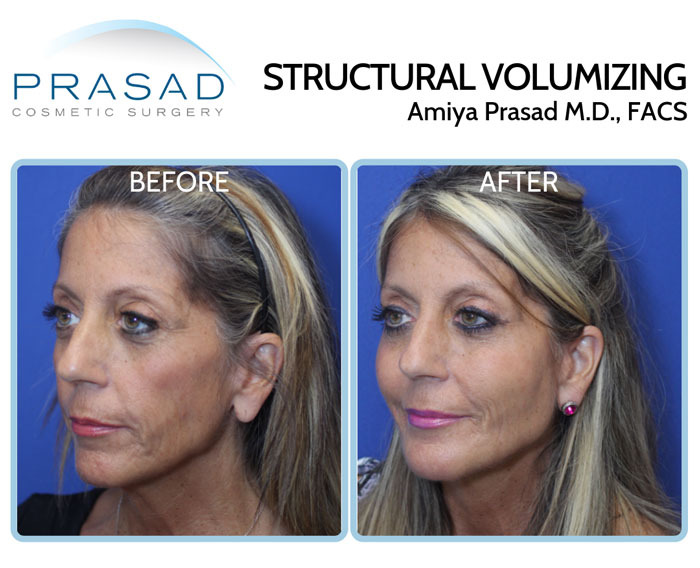
People dealing with facial aging particularly in the midface area, often assume they need a midface lift, also called a cheek lift. However, what is seen as sagging skin or tissue laxity may be more of loss of projection and definition due to age-related volume loss. I’ll discuss my approach to midface rejuvenation.
As a cosmetic surgeon focused on treating facial aging, I perform all types of facelift surgeries, including midface lifts. The experience and knowledge of facial anatomy as a surgeon have guided my approach to the precise placement of cosmetic fillers at the deeper bone level to restore age-related bone volume loss.
I recall how in the late 90s, facial aging in the midface was seen as a problem caused by laxity and vertical descent of the soft tissue in the midface. Different types of midface lift procedures were being developed using new endoscopic technologies.
Differences Between Facelifts and Midface Lifts
Mid-facelifts are not the same as facelifts, which include SMAS facelifts, deep plane facelifts, or short-scar mini facelifts. Full facelifts are meant to address sagging skin and tissue, as well as tighten the underlying facial muscle foundation called the SMAS, short for the superficial musculoaponeurotic system.
These different facelifts, which range with the extent of surgery appropriate for different age brackets, usually start with an incision along the front of the ear that can extend behind the ear, so skin can be trimmed and lifted, the underlying muscle tightened, and soft tissue repositioned. The skin is then redraped, and the incision is closed along the front of the ear. With mid-facelifts, only lifting the midface is addressed, so the incision is made in the temple for surgical lifting of this area only.
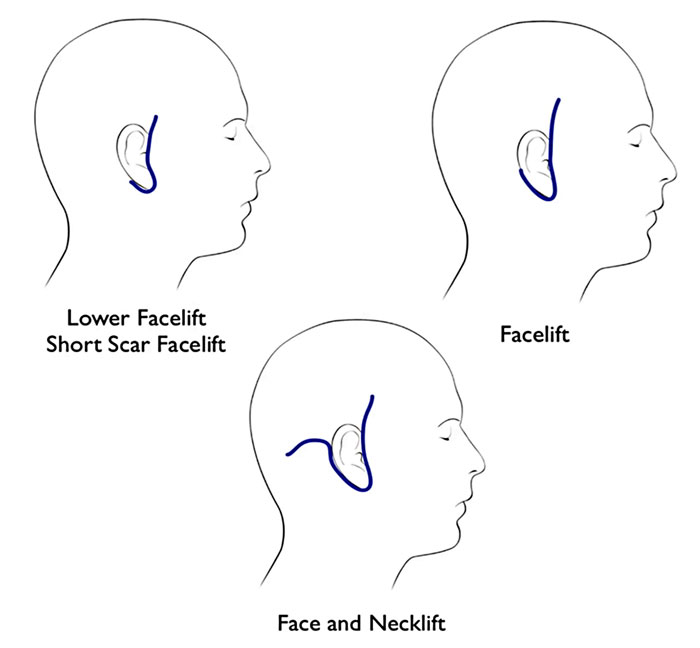
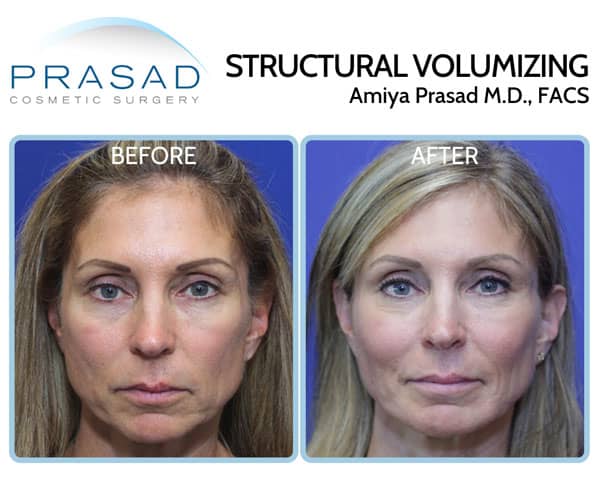
Volume Loss: The Main Cause of Midface Aging
In my opinion, these midface lifting strategies addressed a small part of the more significant cause for a deflated and sagging appearance in this area – volume loss. This doesn’t mean that there was no recognition of volume loss, as surgeons often advocated combining midface lift with fat grafting enhance volume.
It’s important to understand that as we age, bone, muscle, fat, and soft tissue decrease, with bone loss being the most significant. For example, cheek bone volume loss can make the skin over the cheeks appear to sag, as the volume that once gave the cheek skin its structure and support is now lost.
Having performed midface lifts in the past, as well as surgical placement of cheek implants to restore volume, I’ve changed my approach to the midface by focusing on the bone loss, using new techniques to approach this problem.
Structural Volumizing: A Non-Surgical Approach to Midface Volume Loss
For most of my patients, I restore mid-face volume using a specialized method to place long-lasting hyaluronic acid fillers at the bone level in a comparable way to facial implants. Traditional filler placement at the midface is usually done at a more superficial level of the soft tissue. At this level, the skin is unable to support any substantial filler volume. The filler material will often migrate, so you can look soft, doughy, and even bloated.
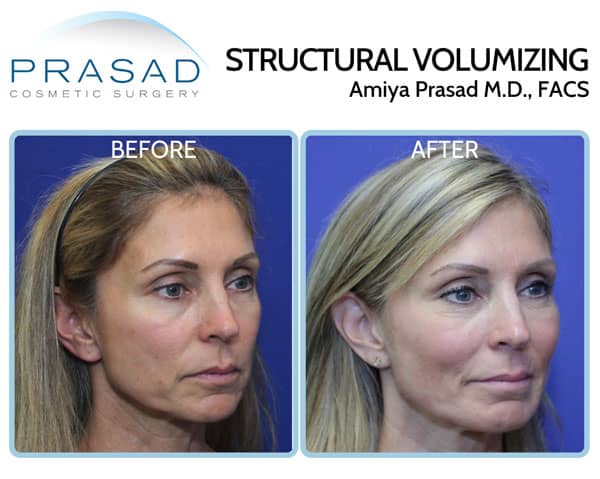
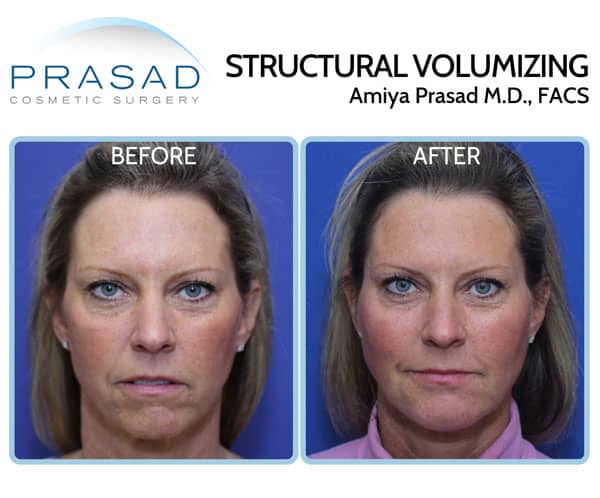
With an understanding of the deeper anatomy of the face from performing facelifts and other facial surgeries, I’m able to precisely place filler at the deeper bone level and avoid the migration that is seen when filler is placed in the soft tissue.
Placing filler at the foundational bone level actually improves the definition of your facial bone structure, using a method called Structural Volumizing.
At this time, my filler preferences are thicker hyaluronic acid fillers such as Juvederm Ultra Plus, and Juvederm Voluma. Hyaluronic acid is found naturally in the body, so these fillers are biocompatible, and are safely metabolized with time.
Midface Filler for Volume Loss
We perform Structural Volumizing for the midface routinely in our office. Many of our patients come in during their lunchtime and return to work right after. Your results can be seen immediately after the procedure, but patients follow up after 2 weeks so the filler material can settle where it was placed. After 2 week, I see if any enhancement would be of benefit.
Long-Lasting Results with Minimal Downtime
Generally speaking, one of the first noticeable effects of aging in the midface is characterized by volume loss, leading to you having less projection and definition. As opposed to surgery and fat grafting, the strategic placement of filler at the bone level can add structure and definition, as well as a subtle lifting effect, without surgery. I hope you found this information from my experience helpful.
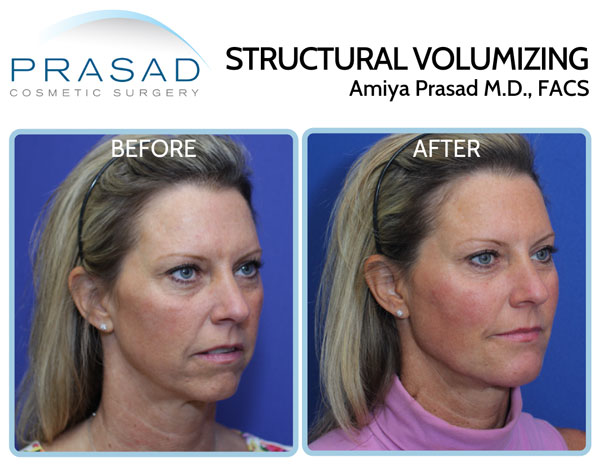
Midface Rejuvenation (Midface Filler) NYC and Long Island, New York
Dr. Amiya Prasad is a Board-certified facial cosmetic surgeon, and a Fellowship-trained oculofacial plastic and reconstructive surgeon. He’s been in practice in Manhattan, New York City, and Garden City, Long Island, for over 25 years.
If you’re interested in recommendations for your individual situation, you may contact us through our websites or call our offices to schedule a consultation.

